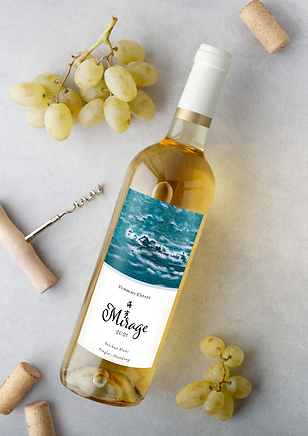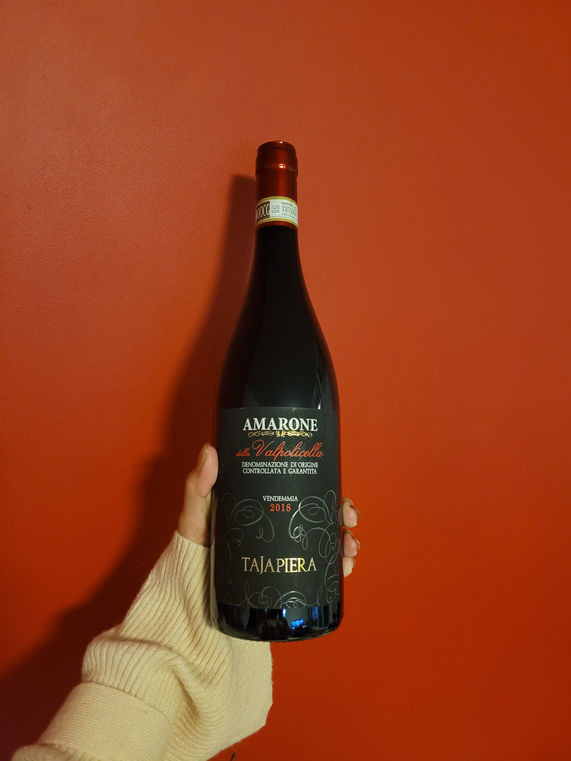Natalie Lee
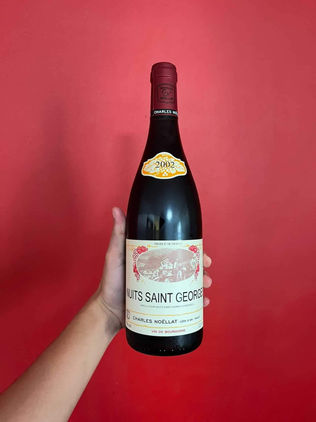
Below are some samples of my previous work and projects in Wine.
From a range of wine-tasting notes writing, to private wine events, consultancy reports, academic essays, and competitions.
Please select the work on the left menu.
Report on the Wine Industry of the Republic of Georgia
Apr - 2022
Report on the Wine Industry of the Republic of Georgia
A study of the MSc International Wine Management @ PolyU - Graded A
Professor: Steve Charters, Master of Wine
Author: Lee Yuen Ying Natalie
1.1 Introduction
Georgia is a wine nation that often goes under the radar compared to other more established wine regions but yet this small proud nation has a culture and identity richly intertwined with wine and winemaking practices as Georgia’s winemaking history has been traced back to 8000 years ago with archaeology evidence (Rytkönen et al., 2021). Since the import prohibition of Russia in 2006, Georgia has expanded its wine exporting channel to other countries such as China, France and North America. Over the greater part of the last decade, Georgia has moved to establish itself alongside other winemaking nations as an emerging player in the international wine business. The purpose of this report is to provide a broad analytical review of the current status of the wine industry of the Republic of Georgia and its place within the world of wine.
1.2 Methodology
In order to gain a board review on the Georgian wine industry’s performance, a secondary data analysis, literature review and a primary interview were conducted. For the secondary data analysis, data were collected from governing bodies and industrial organisations to generate an accurate analysis. In this report, primary research has been conducted with personal interviews with industry professionals in Hong Kong, the interviewees have obtained WSET Level 3 Award in Wines, DipWSET and have at least 5 years of experience in the wine industry regarding business development and wine merchandise who can express their insight with Georgian wines in the international market.
2. Environmental Scan
2.1 Political Factors
The Georgian wine sector has had many turmoil situations over the years, in 1982 Georgia had over 145,00ha of vineyards, even during the anti-alcohol campaign years under the Gorbachev rules which first came into practice in the year 1985. Georgia was able to maintain around 115,00 ha of vineyards while under Soviet Union rule (Pravda.RU, 2006). Georgian wine was greatly influenced by the established trade agreement between the Georgian government and the Russian government. With vineyards using Russian machinery to create wines that were often described as being old fashioned and out of touch with the western market, Georgian winemakers had little options but to only trade with their Russian counterparts. However, in 2006, the Russian government announced an embargo on trade between the two countries stating the wine was not up to their food and hygiene protocols Russia accounted for 80% of Georgian wine sales. (Pravda.RU, 2006)
The 2006 embargo on Georgian and Moldovan wines in Russia was put in place after Russian Chief Sanitary Inspector Onishchenko claimed that they had found traces of heavy metals and pesticides in Georgian wines. It was also claimed by the Russian government that the alcoholic product labels have also been falsified. The Russian Consumer Agency would go on to state that 85.7% of 21 different sorts of Georgian wine sold in Moscow did not comply with sanitary requirements. Following the allegations put in place by the Russian government, Seven Georgian wineries were later forced to close down following an investigation that found they were producing falsified wine. (Pravda.RU, 2006) Local winemakers then decreased the wine export to Russia and looked for new countries for business such as China, Japan, the U.S.A, Poland, France and Sweden.
Following Georgia’s application to join the European Union, Georgia and the European Union signed an Association Agreement on June 27th 2014 ("Georgia - Trade - European Commission", 2022), the agreement that would come into force in July 2016 allowed Georgia to have Deep and Comprehensive Free trade area status; this agreement was put in place to increase the markets for both parties. In the year 2018 Georgia exported 800 million euros worth of goods to countries in the European Union with wine being 6.3% (50.4 million euros) of the total of the goods exported into Europe. ("Georgia - Trade - European Commission", 2022)
2.2 Economic Factors
In 2019, the total labour force in Georgia showed a 9% decline compared to 2013. The percentage of employment in the agriculture sector has decreased from 47.3% to 38.2%, the 9% decline shows direct relations as a result of less labour in the agriculture sector while the services sector increased by 5.7% and the industry sector increased by 3.5% in the same period. The trend of labour in the agriculture sector will potentially decrease as labourers migrated to European countries and Greece is the most popular destination country. A previous study showed unemployment is one of the major reasons Georgian migrated to Greece. (Maroufof, 2013) The Statista Country Report of Georgia in 2021 showed the unemployment rate of Georgia in 2019 was 11.6%, while the average percentage in Eastern Europe was 6.89%. The COVID-19 in 2020 made a significant impact and the unemployment rate increased to 21.34% while the average in Eastern Europe was 9.97%. While COVID-19 was an uncontrollable global pandemic, experts believe the high unemployment rate will slowly decline to approximately 13.83% in 2026 (Robinson, 2012), which is still higher than in 2019 before the pandemic. Vineyard workers are important to traditional winemaking, canopy management, pruning, hand-harvest, hand-sorting grapes etc, for high-quality fine wine the winemaking process cannot be fully mechanised. (Robinson, 2012) The cost of labour has to increase to attract local Georgian workers to enter the industry, especially for traditional winemaking wineries. Nevernessless, for newly established wineries and those who prefer modern winemaking that requires machines and temperature-controlled stainless-steel vessels, the cost of purchasing machines and facilities will be increased.
The Georgian government supported the local grape varieties and the grape grower, in 2020 the subsidy programme has been introduced, and wineries must pay a minimum of 0.8 Georgian Iari per kilogram of Rkatsiteli and Kakhuri Mtsvane under a minimum purchase quantity of 1000 kg of grapes, in which the government will subsidise 0.3 Iari. Georgia ranked 9th of 185 easy to do businesses as there were fewer restrictions on export wines. ("Georgia Ranks 7th in the World for Ease of Doing Business, says Latest World Bank Study", 2013) With the government’s financial support which helps wineries to save on the primary cost of grapes purchase, the number of newly established wineries has increased.
In the international market, Georgia has signed the Free Trade Agreement (FTA) with Hong Kong in 2019. It supports the One-Belt-One-Road (OBOR), which links Western Asia and Eastern Europe. Experts believed the trading agreements provide more opportunities for Georgia wines export to other member countries. (Orlov, 2019) Georgia’s winemakers had the new trade agreements with both the European Union and the Hong Kong market still see their average exporting price to these regions being up to 26% in these new target markets. With wine exportation prices being so high it creates greater risks for winemakers in Georgia.
2.3 Socio-cultural factors
Wine is an essential part of people's daily life in Georgia, according to the local monk Father Gerasime from the Alaverdi monastery who said “winemaking began here from the very first day of the monastery”. Unlike most Western European countries, the winemaking history can be dated back to the Roman monks, Georgia’s winemaking history was established even before Christianity. However, Christianity has a crucial role in promoting winemaking in Georgia. In the Christian and Orthodox churches, wine is traditionally used to symbolise the blood of Christ. ("Bible Gateway passage: Matthew 26:28-30 - Easy-to-Read Version", 2022) It is not uncommon in churches in Georgia to showcase Jesus on a cross made of grapevines. According to the Association of Religion Data Archives, statistics in 2014 showed 85.1% of the Georgian population are Christian, combined with the Orthodox, Catholic and Protestant. It covered 29.88% of the Christian population worldwide. Religion plays an important role and created the acceptance of wine in Georgian culture.
“Let us drink to love on earth,” said a local Georgian (Euronews, 2015) The documentary Kakheti shows the local Georgian often pairing wine with daily food. With the common practice of vine growing, the Georgian use dried grapevine as a cooking fuel for making important dishes. Wine is the frontal feature in every meal in Georgia and is the star of traditional “Supras”, traditional feasting and bonding in grand styles for special occasions to honour family events or important guests visiting the area. Wine is symbolic of hospitality which is also reflected in the “Mother Georgia” statue with one hand holding a wine bowl to welcome friends and one hand holding a sword for enemies, the statue was built in 1958 to mark the 1500th year of the founding of her city, Georgia's capital city, Tbilisi. The traditional Georgian winemaking method Qvevri has been granted recognition from UNESCO offering great pride to winemakers in Georgia. With the recognition from UNESCO for the wine making method Qvevri Georgia has a unique selling point to use to attract potential customers and wine tourists to the area.
2.4 Technological Factors
The Ministry of Environmental Protection and Agriculture of Georgia has shown continued support to develop viticulture technology, including grape varieties, cadastral programme, bio-diversity and small business support projects. From 2020 to 2021, the ministry aimed to provide education to farmers in order to understand the new systems and the importance of quality control. The ministry introduced modern technologies to contribute to the winery development, a new plant certification system for high-quality wine production and conducted wine quality laboratory research. Kakheti Expo is a platform that provides the latest technologies, information and opportunities to farmers and winery professionals. ()
Transportation of the wines is important in the wine business, wine being shipped by boat was less expensive than on land but often cost quality issues as the wine sometimes resulted in poor condition when it reaches the destination after a long period of transportation. (Brostrom & Brostrom, 2009) Georgia built the Baku-Tbilisi-Kar (BTK) rail in 2017, this is a part of the Trans-Caspian International Transport Route (TITR) that connects with China via Astana to the east and Poland, Turkey to the west. According to the HKTDC Research, the transportation from China to Georgia on container ships requires 45 days while it can be shortened to 8 days via rail. (Brostrom & Brostrom, 2009) The Georgian government has committed US$120 million under the 52-year-own-transfer (BOT) concession agreement to support the construction and development of connecting the port and land transportation links. This unlocked new trading routes to the Caucasus, Caspian and Central Asian, the wine industry has shown to be more beneficial for wine distribution in Georgia. There is no evidence to be collected but researchers believe with the annual capacity of 1 million passengers on the rail, potentially boosts wine tourism in Georgia.
2.5 Legal Factors
The Georgian government had the amendments to the Georgian wine law which will start in 2023 and aimed to grow the competitive wine and other alcoholic drinks of grape origin market in Georgia. The LEPL National Wine Agency announced alcohol beverage content from 3.5% to 14.%, containing at least 50% of wine can be labelled as' 'wine-based beverages'' and the new definition of “Alcohol-free wine” refers to wine which has been thought of as the dealcoholization that results from 0.5% to 15% ABV. (National Wine Agency, 2021) As traditional Georgian wines are off-dry, sweeter with less alcohol content, the latest amendments provided more freedom for wineries to label their wines which cannot obtain the PDO labelling due to the low alcohol content with higher sugar content.
For Protected Designations of Origin (PDO) wines that are under the protection of GIs (Geographic Indications), the minimum alcohol percentage for both dry white and red wines is no less than 11% ABV; for amber wine, no less than 12%; for semi-dry, semi-sweet and sweet wines no less than 10.5%; volatile acidity for all above should less than 5g per Litre. Under the PDO, the grape varieties, the colour of the wines, specific zone for production, the distance between each grapevine planted, the shape of pruning, sugar content, and materials for transportation were all controlled by the LEPL National Wine Agency. The appellation system showed similar standards to the French AOP system which reflects the determination on controlling high-quality wine production.
Lisbon Agreement for the Protection of Appellation of Origin since 1999. EU-Georgia Agreement on Mutual Recognition of Geographical Indications of Agricultural Products and Foodstuffs in 2012 allowed for greater protection of Georgian wines and wine products in the newly emerging markets.
2.6 Environmental Factors
With animal and human diseases being an issue in Georgia in the past
Georgia’s water infrastructure was found poor in quality except for the two largest cities of Tbilisi and Batumi, with 70% per cent of the country's population now connected to sewers however the sewage plants that were established during the Soviet period are now listed as not being up to the standard used in other developed countries and only able to provide low-level primary treatment to sewage waste (Government of Georgia, 2016). This has caused untreated municipal wastewater to become a major polluter of surface water. Furthermore, it was reported as of 2008 up to 30% of the population were unable to receive water for more than 12 hours per day (Government of Georgia, 2016). Water is important in agriculture and winemaking, Russia’s chief sanitation official reported in 2006 ("First wine, now Russia bans Georgia's water", 2006), that they claimed the Georgian wine has counterfeited water issues and that the label does not match the water quality, sanitary and taste standards. Despite this could be a political act, the water quality issue is an actual problem the Georgian government has to solve.
3. Interview with Wine Professionals based in Hong Kong
To understand the Georgian wine performance in the international market, we conducted a personal interview.
On the performance of Georgian wine in the Asia market, Anson Wan, DipWSET, Business Development Director of MyiCellar, mentioned there are several large-scale Georgian wine promotional events being held in Hong Kong, such as the Georgian Wine Festival in 2019 at the Four Seasons hotel and the Georgian wine tasting workshop with Debra Meiburg MW in 2021, as a business partner, Hong Kong helped Georgia to promote their wine and culture in Asia. “Problem is, traditional wine drinkers still excluded Georgian wine from the mainstream wines. They found the flavour quite mediocre.” said Anson. Georgian wine is attractive to young wine lovers and those who enjoy a sweeter wine. Overall, Georgian wine has low awareness and will have to carefully select what niche market they need to target for export growth.
Commenting on the performance of Georgian wine in the international market, Raymond Lau, Wine Merchant from Marvino, says “I think that the Georgian wine industry is still exploring the new wine distribution channels and opportunities with different countries, the importers are using the Blue Sea strategy.” According to Raymond, the reason that Georgia had significant growth in exporting and revenue in those new exporting countries is due to the new development and new market. “ I cannot tell the future, but based on the data in the past decade, it does not show significant growth in the international market in terms of the market shares of Georgian wine. It is still experimental.” Raymond said.
Disagreeing with the previous statements, Jack Tang, WSET Level 3 Award in Wines, Co-Founder of Georgian Wine Wholesale (HK), mentioned Georgian wines are highly rated in Eastern European countries and they are high-quality wines that received numerous awards in international competitions including the Organisation of Vine and Wine (OIV). “Georgian wine has shown it can be as competitive as French fine wines. It has always been the wine for state banquets in Russia and the former Soviet Union. The former Soviet leader Stalin also used Georgian red wine to entertain foreign political leaders.” Jack believed Georgian wine has the potential to develop continuous growth in the export market. According to Jack’s business data, they have an 83% return customer rate for the Georgian wines they imported directly from the wineries.
4. Recommendations
According to the collected data and industrial interviews, Georgian wine has raised awareness since the expanded export to new countries, but there is room for improvement and growth. Georgian wines still lack competitiveness compared to the current trend of French, Italian and Spanish in the old world and even American and Australian wines in the new world. With traditional Georgian wines that have a wide range of sweetness levels, a strategic business plan for the wineries should be made for semi-dry to semi-sweet Georgian wines. Sweeter wines are more appealing to the older generation with a daily wine consumption cultural background. With the modern technology being introduced in the winery, the association is recommended to balance the proportion of modern-style wines and traditional wines production in Georgia to fulfil the macro trend of the global wine consumption needs. The government had an insight into the dealcoholized wine for the global market following the healthy lifestyle under globalisation, there is no data that could be found for the dealcoholized winemaking in Georgia, we believe the new wine law will promote the dealcoholized wine production in the future. The association is recommended to seek investors and trading agreements to fund this programme as it required new technology and machines.
Since 2013, Georgian expanded its wine trade with Eastern European and Asian Countries, while Georgia promoted the wines with traditional winemaking methods and history, the export price per bottle was low, around 3 USD per bottle (JAMnews in English, 2021). Which created an illusion to the global market that Georgian wine is relatively cheap yet not necessarily related to outstanding or good quality. The cost of exporting wine to new countries has increased due to transportation, the wine industry is relying on the government subsidy to fund the cost, but the generated profits have room for growth. Wineries are suggested to focus on high-quality winemaking and review their export price, keep showcasing the high-quality Georgian wine in international competitions, and with the recognition gained from the OIV in recent years, Georgian wine has the potential to inflate the product value to generate higher profits. It is also recommended to control the yieldings and wine production in Georgia and decrease the low-quality wine exports.
Georgian wine appellation system and the PDO are well-structured but not as well-known in both the industry and require educational programmes to help the front-line wine professionals equip the ability to boost the market awareness and sales. While the appellation system is comprehensive, and it is similar to the French AOP system, the Georgian Wine Association is suggested to provide online free courses to the public and certificate courses for wine professionals. It is suggested the association can seek collaboration for Wine Expos and Wine Education Weeks with wine institutions that offer certification courses that are widely accepted globally such as the WSET and the Wine Scholar Guild.
All new export partners such as Sweden, France and China have shown dramatic growth in the revenue and exported quantity of wines but the Georgian wines only account for less than 1% of total wine imports in new target markets. We have mentioned that the cost of exporting wine has increased in Georgia. Within the newly established BTK and TITR rail, the FTA trading agreement and the EU free-trade agreement, there is potential to lower the cost of exports. In this report, we lack sufficient evidence to show the performance of these trading agreements and there are uncontrollable factors from the Ukraine Russian War in 2022. We believe that land transportation to Asia will be affected by the conflicts. The association is recommended to focus the trades to focus on the Western and Northern European countries and the American Market. Georgian wine is suggested to increase the market share with product innovation, increase quality, advertising and increase the customer base. It is not recommended to lower prices for instant sales and exports.
Water pollution has to be solved by the government, it will affect Georgian wine’s reputation globally and the trust in the wine quality. For the association, it is recommended to apply a laboratory test for the wine products to show the quality standard. The innovation and technology development should start a project on studying and creating filters, methods to clean the polluted water for agriculture and recycling the water for agriculture usage. This will be a long-term development, but the government has to show the determination to solve the issue in the global market.
As Georgia is facing a serious labour shortage which is reflected in the agriculture sector, wineries have less labour to process traditional winemaking which cannot be replaced by machines. The Georgian government has submitted the application to join the European Union as a full member in 2022 which brings out potential issues when more Georgian populations will migrate to more developed European countries, such as France, Italy, and Greece. It will put the Georgian winemaking industry under greater pressure. The Georgian wine industry should provide a more competitive salary, fewer working hours and benefits plans such as supporting the labour to continue development in the industry with the government’s subsidies on vineyard facilities.
5. Conclusion
Georgian wine is an emerging player in the world of wine, the Georgian Wine Association needs to improve the reputation of the Georgian wine quality and its market share. The overall infrastructure of Georgia continues to be a barrier for the wine industry. Georgian wine has not been able to reach its full potential in the global market due to the misdirection when it comes to building Georgia as a high-quality winemaking region. Georgia should be proud and continue its winemaking heritage and utilise modern winemaking methods and technologies to support quality-controlled wine production. The association should strengthen the relationship with importers and the trust of wine merchants to expand the wine business in the new exporting countries. Overall, the current place of Georgian wines within the world of wine is disappointing with the lack of market share and little recognition given the strong historical-cultural background of the wine industry in Georgia. On the other hand, Georgia has shown signs of changing its position to a high-quality winemaking country in recent years and the future looks bright for the Georgian wine industry.
Reference List
-
Bible Gateway passage: Matthew 26:28-30 - Easy-to-Read Version. Bible Gateway. (2022). Retrieved 16 April 2022, from https://www.biblegateway.com/passage/?search=Matthew%2026%3A28-30&version=ERV.
-
Brostrom, G., & Brostrom, J. (2009). The business of wine. Greenwood Press.
-
Euronews. (2015). Kakheti: Georgia's cradle of wine - life. Retrieved from https://www.youtube.com/watch?v=D0FIj6kczF4&t=217s
-
First wine, now Russia bans Georgia's water. the Guardian. (2006). Retrieved 17 April 2022, from https://www.theguardian.com/world/2006/may/06/russia.nickpatonwalsh.
-
Georgia - Trade - European Commission. Ec.europa.eu. (2022). Retrieved 13 April 2022, from https://ec.europa.eu/trade/policy/countries-and-regions/countries/georgia/.
-
Georgia Ranks 7th in the World for Ease of Doing Business, says Latest World Bank Study. (2013). Retrieved 16 April 2022, from https://www.worldbank.org/en/news/press-release/2019/10/24/georgia-ranks-7th-in-the-world-for-ease-of-doing-business-says-latest-world-bank-study.
-
Government of Georgia. (2016). EU Water Initiative (p. 9). United Nations. Retrieved from https://www.nispa.org/files//GE-report.pdf
-
JAMnews in English. (2021). Georgian Wine: What's Behind the Success? [Video]. Retrieved 15 April 2022, from https://www.youtube.com/watch?v=7BIvUUZtnQs&t=336s.
-
Maroufof, M. (2013). Irregular Migration between Georgia and Greece: Everyone can cross a low fence (pp. 13-14). European Commission. Retrieved from http://file:///C:/Users/SAMSUNG/Downloads/docl_36747_902533778.pdf
-
National Wine Agency. (2021). The draft law on amendments to the "Law of Georgia on Vine and Wine" and the "Code of Administrative Offenses of Georgia" was approved by the Government at the session.
-
Orlov, L. (2019). Georgian Wines and Spirits Set to Conquer Asia Via Hong Kong. Hong Kong: HKTDC Research. Retrieved from https://research.hktdc.com/en/article/MzE3MTU2NTE5
-
Pravda.RU. (2006). Georgia closes 7 fake wine factories. Retrieved from https://www.pravda.ru/news/economics/83905-vino/?__cf_chl_tk=ZfLhmoM09si20.WuguRMGffla.5Ov5bxnwDZEn8NlGs-1650045547-0-gaNycGzNCJE
-
Robinson, J. (2012). When wine means backache [Blog]. Retrieved 16 April 2022, from https://www.jancisrobinson.com/articles/when-wine-means-backache.
-
Rytkönen, P., Vigerland, L., & Borg, E. (2021). Tales of Georgian wine: storytelling in the Georgian wine industry. Journal Of Wine Research, 32(2), 117-133. https://doi.org/10.1080/09571264.2021.1940903
A Report to Analysis the Correlation of Climate Change and the Impact it has on Wine Production in the UK over the Last Decade
Dec- 2021
A Report to Analysis the Correlation of Climate Change and the Impact it has on Wine Production in the UK over the Last Decade
A Study of the MSc International Wine Management @ PolyU - Graded A
Professor: Chen Chien Hao, An associate professor at the National Kaohsiung University of Hospitality and Tourism
Author: Lee Yuen Ying Natalie
Abstract:
The United Kingdom have an important role in the wine market as a wine importer throughout history but due to its geographic location, it was not considered a high-quality wine region and viticulture in high-latitude vineyards often face challenges of grape ripening issues with cool summers, early autumn freeze and less exposure to sunshine compared to their more establish winemaking neighbour - France. Previous research founds successful grape growing sites are located between the latitudes 30 and 50 degrees North and 30 to 40 degrees South (Schultz & Jones, 2010), notable wine regions such as Bourgogne in France, Rioja in Spain, Tuscany in Italy. While the United Kingdom lies on the latitude from 50 to 60 degrees North, vineyard locations are limited. Through the winemaking history, these sites have been considered the best due to their geographical suitability and positive impact on the yields and producing good quality wines. The aim of this research was to gain an understanding of the correlation of climate change and the impact on UK wine regions, with the view, to analysing what opportunities it had brought to the UK wine market and the limitation that it faced. In this research, we analyse existing data collected by Met Office (UK’s national weather service), Harvest Reports for Great Britain to study showcase the correlation. Beneficial by the temperature increased in the past decade, the figures show when the temperature increased and the climate became suitable for grape growing, the figure of wineries established in the United Kingdom increased significantly with a 56% growth.
Introduction:
Climate is one of the most important factors in viticulture, winemakers tried to prevent natural hazards such as spring frosts, cool summer and hail, early autumn freeze, lack of sun exposure el cetera. (Harm, 1990) These natural hazards can lead to several issues that affect the yields of grapes, limitation of grape varieties grown in the regions, damage to the vine and not-fully ripened grapes due to the cool temperature and lack of sugar content which impact the fermentation progress of the wine production. From the UK Food Standards Agency (FSA), since 2009, chaptalization with a maximum of 3% increase of total alcohol is allowed. In extreme cold years where the climate conditions are unfavourable, it allows a total of 3.5% increase of total alcohol ("Wine production", 2021).
Wines produced in the UK are eligible to apply the Protected Designation of Origin (PDO), Protected Geographical Indication (PGI) and Varietal Wine certification. Besides chaptalization being allowed, the maximum total alcohol content is 11.5% for white, 12% for red and rose wines. A notable rule that indicated the minimum natural alcohol content from the grape must is 8.5% for wine without a geographic designation and the minimum natural alcohol content is 5.5% which is relatively low compared with other European wine regions. ("Wine production", 2021). The FSA does not require wineries to notify acidification or de-acidification of the wines, which provides flexibility to the winemaking process as grapes from high-latitude regions often contact high acidity as the grape is not fully-ripened and sugar content is low.
2010 to 2020 has been recorded as the hottest decade since 1850 ("2010 to 2019 was the hottest decade on record | Earth | EarthSky", 2021). The global average surface temperature has increased by 0.4° approximately. The increased temperature came along with increased rainfall and sunshine. 2020 has been recorded in the top ten warmest years with the most rainfall and sunshine. The spring is dry and sunny, the sun exposure has increased 150%, which is 626 hours of sunshine in the southern area, compared with normal sunshine across +England and Wales. Climate change also brought floods and storms to the UK, which damaged vineyards and farms. ("Climate change continues to be evident across UK", 2021)
The number of wineries in the United Kingdom has increased 56% from 114 in 2010 to 178 in 2020 (UK Wine Producers, 2021). In this research, we will focus on the factors of the climate, the changes in the grape growing environment in the UK and the wine production volume.
Literature Review:
Viticulture is one of the most important parts of wine production as it will directly reflect the grape crops of the year, good geographic location and vineyard management helped to increase the yield which allows winemakers and producers to have a larger volume of grape must for fermentation. (Jackson, 2014) In other words, viticulture determined the winery’s total harvest and the final wines that would be produced of the year. High-latitude viticulture is risky and challenging, like the UK, Germany also has vineyards in high-latitude locations. Germany’s vignerons often found the sugar content of grapes is 50% less than grapes in other wine regions, such as Bordeaux, Rioja and Tuscany which only reach 5% natural from the grape must (Harm, 1990). The previous research has proven, when the average temperature increased, the total acidity decreased (Schultz & Jones, 2010).
Research from CREWS-UK proposed an estimation of a 50% harvest growth by 2050 of the UK wine production as data reflects that climate change, in general, has been positive. ( Nesbitt and Dorling and Jones, 2019) The risks of climate change have not been reflected but are being mentioned and suggested to be taken into consideration. Extreme weather caused unpredictable grape yields each year, for example, in 2012 the wine production was seriously affected by the low sunshine and bad weather which resulted in less than 8,000 hectolitres of production. While 2018 was “the worst summer for decades” by farmers in other European wine regions, it was a perfect year for UK wineries ("Viticulture in the UK", 2019).
Methodology:
This research analysed the following 6 factors in the past decade: 1. Mean temperatures, 2. Hours of sunshine, 3. Average harvest time and production volume 4. Grape Varieties planted.
With secondary data collected by the UK government’s weather service, applied with the observation of the UK winery’s practice in order to provide a 3-dimensional report.
Mean Temperature in the UK
From the data (see fig.1), there have been significant changes in the winter temperature in the UK in the past decades, the average winter temperature has continuously risen from -1 degree Celcius to 2.5 degrees Celsius (Met Office, 2020). In fact, vines stop functioning below 10 degrees Celcius and the vines may die below -10 degrees Celsius. The average winter temperature in the UK increased almost 3.5 degrees, able to help the vine stay in dormancy status and grow in spring. When focusing on South England where most UK wineries are ("Viticulture in the UK '', 2019), the average winter temperature has risen from 2.65 degrees Celsius to 6.38 degrees Celsius.
The data indicated the weather of spring is unpredictable. In 2013 the average temperature dropped to 2.23 degrees Celsius and bounced to 5.13 degrees Celsius in 2014. Grapevines started to grow buds in spring, which caused a late-budding period of the vines and might lead to a shorter time for the grapes to ripen. In South England, the temperature shows similar trends, notable years are 2011, 2014, 2017, 2020. According to the collected data, the temperature has reached 10 degrees Celsius or above in the mentioned years, which allows the grapevines to start budding early.
The mean temperature of summer and autumn in both the UK and South England regions are stable, with around +1.5 ~ -1.5 degrees Celsius variation. The average temperature in South England reached 17.9 degrees Celsius which allows the grapes to ripen and develop higher sugar content.
(Fig.1 Mean Temperature by Seasons in the UK)
(Fig.2 Mean Temperature of South England)
Hours of Sunshine
Grapevines need an average of 7 hours of sunshine daily for the grapes to ripen and reach an ideal sugar and acidity content. Winery in the UK is far from getting an ideal sun exposure as the average daily sunshine is 4.3 hours. According to the minimum requirement of the 1300 hours of annual sunshine required (GmbH, 2021), in the past decade, the UK weather has reached this minimum requirement. The notable year is 2012 and 2017 where it only had just above 1300 hours of annual sunshine. From the figure (fig.3), hours of sunshine in spring slowly increased and summer was consistent and stable. Warm, dry and sunny spring and summer are able to prevent grey rot damaging the grapes.
(Fig.3 Hours of Sunshine in the UK by Seasons)
Average Harvest Time and Production
From the data (see Fig.4a & 4b), the harvest time in the UK winery had a direct impact on the weather. In 2016 and 2017, veraison started in late August and wineries had to wait for late harvest hoping the grapes would ripen. While in 2018, “the best summer” where the annual hours of sunshine reached 1568 hours (from Fig.3), the version started early in mid-July and most wineries completed harvest in late August. The total production of wines from the UK in 2018 reached 7.12 Tonnes-ha which reflected a successful year in viticulture with the ideal climate.
Bottles of wine produced per year in the UK grew rapidly, more than 1000 Ha compared to 2010. (UK Harvest Report, 2020) The scale of production not only shows the demand of the wine market is growing in the UK but also reflected the UK wineries were learning from the experience and applied more viticulture management. The numbers of the total bottles of wine production show continuous growth even in years with bad weather conditions. There were spring frosts in 2017 and 2020, but data showed the total of production maintained growing. In 2019, the UK had a cold autumn and led to a very late harvest time, with unexpected rainfall, the yields were low. From the data, the Tonnes-ha is 5.93, which is 1.19 Tonnes-ha less than 2018, compared with another bad year, the production was 1.25 higher than 2017.
Grape Varieties in the UK
Before 2018, grape varieties in the UK are limited, Eastern-European grape varieties were planted dominantly due to the cool climate in the UK. The primary grapes are Bacchus, Reichensteiner, Rondo, Chardonnay and Madeleine. (UK Harvest Reports, 2020). The change started in 2018, with “the best summer” which led to early version and harvest. Since 2018, winemakers in the UK discovered that it is possible to receive enough sunshine and the grape yield performance maintained positive throughout the years, a lot more grape varieties have been planted in the UK since.
Varieties such as Dornfelder, Ortega, Pinot Gris, Pinot Blanc, Solaris had no records that they were planted in the UK before 2019 (UK Harvest Reports, 2020), In 2019, Reichensteiner had the highest yielding - 7.50 T-acre, Bacchus was the second widely planted grape which had 7.14 T-acre of yielding in 2019. Compared with the newly planted varieties, Ortega recorded 6.53 T-acre which was successfully planted.
Varieties Planted in the UK and Yielding
For newly planted white grape varieties, the UK winery shows their practising experimental plantings for grapes which ripe early with high sugar content to improve the winemaking. Ortega is an early-ripening grape which is also used as table grapes. It has resistance to frost which is suitable to grow in the UK and can reach high must weights for wine production. It is a hybrid grape origin in German, created in 1948 by crossing Muller-Thurgau and Siegerrebe which contains sweet floral aromas and peach flavours. Pinot Gris is an early-mature grape which is best grown in cool climates which contain higher sugar levels and high alcohol when fully fermented. This grape can produce full-bodied wines with a balanced acidity.
Conclusion:
As the United Kingdom continues to develop into a wine making region, one must say that with the increase of average temperatures in the region increasing over the last decade at a continuous steady rate, the number of wineries and wine produced in the United Kingdom has also shown a steady increase as well. Wine needs grapes to rely on specific unique conditions to grow and flourish. In the United Kingdom this is often said that for wine to flourish there has to be a warmer spring and longer dryer summers has allowed for the United Kingdom to join the other established regions, it has been noted that colder an harsher winters have to become frequent in the last decade which has had a negative effect on the wine production in the United Kingdom. Warmer climate motivated vibrant varieties and new grape varieties were planted, a trend of aromatic grape planting started which provided options for winemakers to produce slightly sweet style wines and medium to medium-full-bodied wines.
Limitations:
Wine has a long history in the UK, but mainly focused on its wine trading and marketing orientation. In this research, we faced difficulties sourcing relevant articles and journals due to very little research being conducted. Further research with consistent and frequent observation and analysis are recommended for future research. Data given by the Met Office is very important for climate impacts reviews, yet harvest reports started to become more frequent in the last decade as climate change has become a more mainstream issue.
References
-
2010 to 2019 was the hottest decade on record | Earth | EarthSky. EarthSky | Updates on your cosmos and world. (2021). Retrieved 19 December 2021, from https://earthsky.org/earth/2010-to-2019-hottest-decade-on-record/.
-
Ballantyne, Terblanche, N. S., Lecat, B., & Chapuis, C. (2019). Old world and new world wine concepts of terroir and wine: perspectives of three renowned non-French wine makers. Journal of Wine Research, 30(2), 122–143. https://doi.org/10.1080/09571264.2019.1602031
-
Boulton. (1996). Principles and practices of winemaking. Chapman & Hall.
-
Climate change continues to be evident across UK. Met Office. (2021). Retrieved 19 December 2021, from https://www.metoffice.gov.uk/about-us/press-office/news/weather-and-climate/2021/climate-change-continues-to-be-evident-across-uk.
-
EnglishWine.com - UK harvest reports. (2020). https://www.englishwine.com/harvestreports.htm
-
Food Standards Agency, & UK Wine Producers, & Englishwine.com. (October 22, 2021). Wine production volume in the United Kingdom (UK) from 2000 to 2020 (in hectoliters) [Graph]. In Statista. Retrieved December 19, 2021, from https://www-statista-com.ezproxy.lb.polyu.edu.hk/statistics/303009/wine-production-united-kingdom-uk/
-
GmbH, D. W. (2021, December 13). Climate & Weather. Deutsches Weininstitut. Retrieved December 19, 2021, from https://www.germanwines.de/knowledge/viticulture-winemaking/climate-weather/
-
Harm J. (1990). High-Latitude Challenge. Focus, 40(2), 37. http://ezproxy.lb.polyu.edu.hk/login?url=https://www.proquest.com/scholarly-journals/high-latitude-challenge/docview/198476565/se-2?accountid=16210
-
Jackson, R. (2014). Wine Science. Elsevier Science.
-
Nesbitt, Dorling, S., & Jones, R. (2019). Climate resilience in the United Kingdom wine production sector: CREWS-UK. BIO Web of Conferences, 15, 1011. https://doi.org/10.1051/bioconf/20191501011
-
References:
-
Schultz, H., & Jones, G. (2010). Climate Induced Historic and Future Changes in Viticulture. Journal Of Wine Research, 21(2-3), 137-145. https://doi.org/10.1080/09571264.2010.530098
-
UK Latitude and Longitude Map. Mapsofworld.com. (2021). Retrieved 19 December 2021, from https://www.mapsofworld.com/lat_long/united-kingdom-lat-long.html.
-
UK Wine Producers. (October 22, 2021). Number of wineries in the United Kingdom (UK) from 2000 to 2020* [Graph]. In Statista. Retrieved December 19, 2021, from https://www-statista-com.ezproxy.lb.polyu.edu.hk/statistics/302991/number-of-wineries-united-kingdom-uk/
-
Viticulture in the UK. Pdf.euro.savills.co.uk. (2019). Retrieved 19 December 2021, from https://pdf.euro.savills.co.uk/uk/rural---other/spotlight---viticulture-in-the-uk.pdf.
-
Wine production. Food Standards Agency. (2021). Retrieved 19 December 2021, from https://www.food.gov.uk/business-guidance/wine-production.
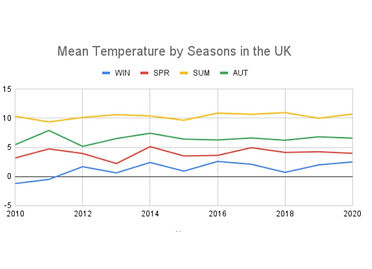.jpg)
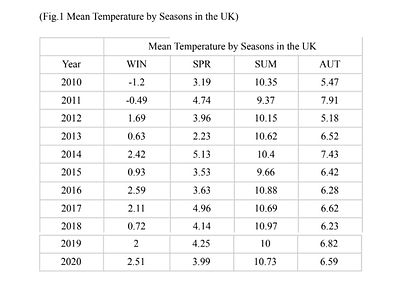.jpg)
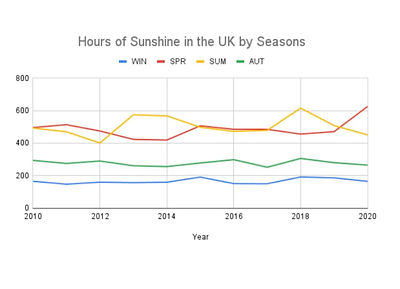.jpg)
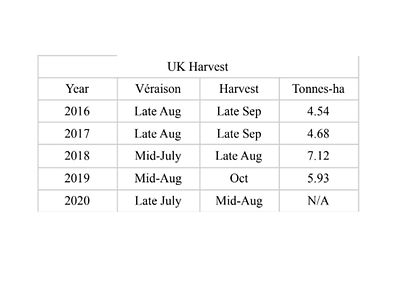.jpg)
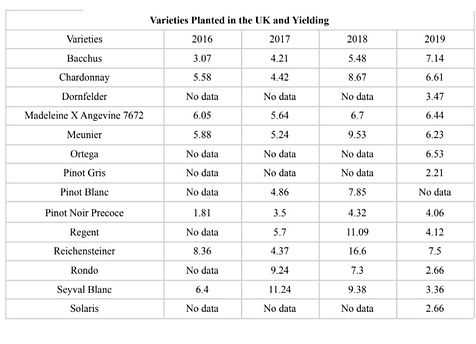.jpg)
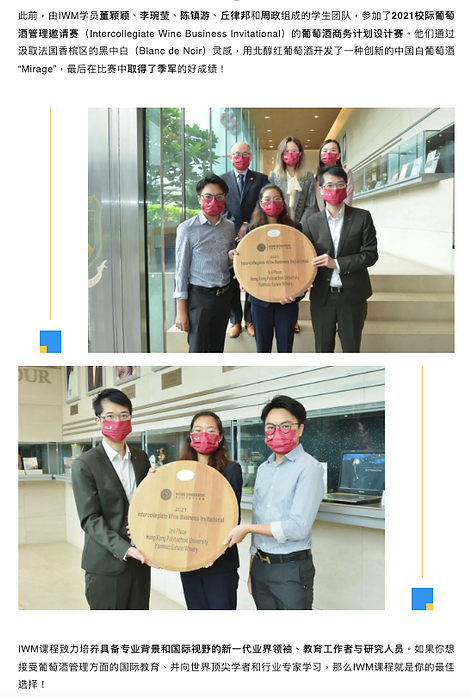
IWBI 2021 - 3rd Place
In December 2021, Natalie Lee and her team from The Hong Kong Polytechnic University joined the Intercollegiate Wine Business Invitational competition organised by Wine Business Education (WBE). The team was awarded 3rd Place in this international competition.
The team designed a Chinese winery brand, and a white wine named "Mirage" with the label design, marketing research, logistics, financial plan and labeling.
(Left: News published online by POLYU SHTM on WeChat)
